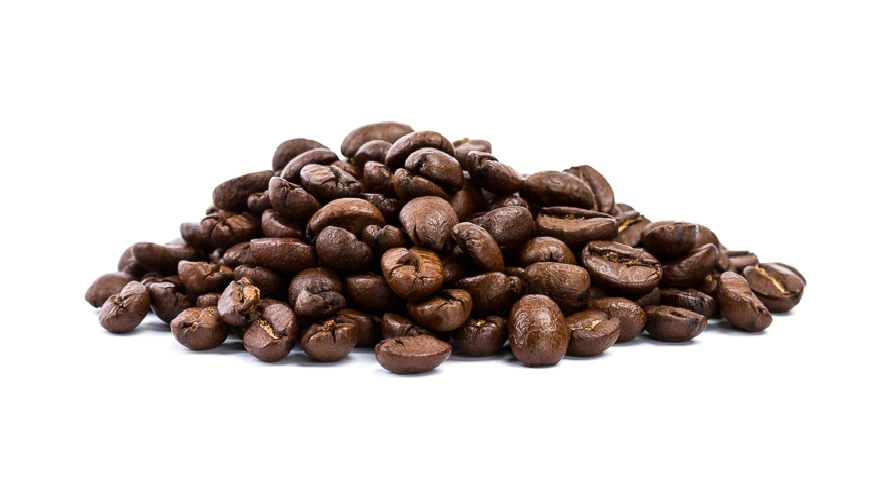Coffee Beans
Coffee Beans
Coffee beans, the seeds of the Coffea plant, are renowned globally for their rich and complex flavors, making them a staple in diverse culinary and beverage cultures. The Coffea genus includes several species, with the most commonly cultivated being Coffea arabica and Coffea robusta. The journey of coffee beans from plant to cup involves meticulous cultivation, harvesting, processing, and roasting. Cultivated primarily in tropical regions, coffee plants produce cherries that contain the sought-after beans. The harvesting process, often done by hand, involves selectively picking ripe cherries for optimal flavor. After harvesting, the beans undergo processing to remove the outer layers, revealing the green coffee beans. The subsequent roasting process is crucial, as it transforms the green beans into the aromatic, flavorful coffee beans known and loved worldwide. Coffee beans have a diverse flavor profile influenced by factors such as the coffee plant's species, growing altitude, soil conditions, and the roasting process. Arabica beans, known for their mild acidity and nuanced flavors, are often favored for specialty coffees. Robusta beans, on the other hand, are recognized for their bold, earthy taste and higher caffeine content.
Beyond the realm of beverages, coffee beans find application in various industries. In cosmetics, coffee extracts are used for their antioxidant properties, while the grounds can serve as exfoliants in skincare products. Coffee grounds also have applications in gardening as a natural fertilizer and pest deterrent. Additionally, coffee bean sacks are repurposed for eco-friendly packaging and various craft projects. The chemical composition of coffee beans includes carbohydrates, lipids, proteins, water, and a complex mixture of compounds contributing to the characteristic aroma and taste. The caffeine content, a natural stimulant, has made coffee a beloved beverage for its energizing effects. From the rich history of coffee cultivation to its widespread consumption, coffee beans embody a global cultural phenomenon. Whether enjoyed as a morning ritual, a specialty brew, or as part of innovative applications in various industries, coffee beans continue to captivate and inspire a diverse range of enthusiasts worldwide.
Physical properties of coffee beans:
Density: 0.8-0.9 g/cm³ (varies with roast level) Moisture Content: 10-12% Hardness: Varies with bean type and roast level Color: Ranges from green to dark brown, depending on roast level Aroma: Diverse and complex, influenced by origin and roast Chemical Composition of Coffee Beans:
The components of coffee beans (% by weight):
Water: 8-12% Proteins: 10-12% Lipids (oils): 10-17% Sugars: 6-8% Caffeine: 1-2% Chlorogenic acids: 6-7% Trigonelline: 0.6-1.5% Acids (e.g., quinic, citric, malic): 4-6% Minerals: 4-6%
Applications of Coffee Beans:
Culinary Enjoyment: Coffee beans are predominantly known for their use in brewing coffee, a globally beloved beverage with an extensive array of flavors, aromas, and styles. From espresso shots to meticulously crafted pour-over brews, coffee beans are at the heart of diverse coffee culture.
Cosmetic and Skincare Products: Ground coffee beans or extracts are utilized in cosmetic and skincare formulations for their exfoliating and antioxidant properties. Coffee scrubs, masks, and creams are popular choices, helping to rejuvenate and invigorate the skin.
Home Brewing and Roasting: Enthusiasts engage in home brewing and roasting, selecting specialty coffee beans from different regions to craft their perfect cup. The art of coffee roasting allows for the customization of flavor profiles to suit individual preferences.
Industrial Applications: Coffee bean extracts, owing to their antioxidant content and potential health benefits, are used in certain industrial applications, including the production of supplements and nutraceuticals.
Agricultural Practices: Coffee grounds are repurposed as a natural fertilizer and soil conditioner. The grounds contain valuable nutrients, such as nitrogen, making them beneficial for plant growth and soil health.
Art and Craft: Coffee beans find unconventional applications in art and craft projects. From creating textured paintings to using them in potpourri arrangements, coffee beans offer a unique and aromatic addition to creative endeavors.
Bio-Based Materials: The byproducts of coffee production, such as chaff (the husk that comes off during roasting), can be repurposed for bio-based materials, contributing to sustainable practices in manufacturing.
Energy Production: Some innovative initiatives explore the use of coffee waste for energy production. Coffee grounds can be used as a biofuel, providing an alternative source of energy.
Community Initiatives: Coffee production often involves cooperatives and community-driven initiatives that support local economies. Fair trade and ethically sourced coffee beans contribute to sustainable practices and community development.
The diverse and multi-faceted applications of coffee beans extend far beyond the cup, encompassing realms of personal care, agriculture, art, and even sustainable energy. Coffee, as a versatile and globally cherished product, continues to inspire creativity and innovation across various industries and communities.

